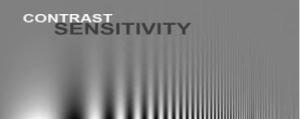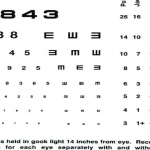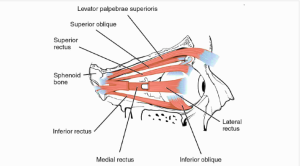
Contrast sensitivity is a
critical aspect of visual
function that is often
overlooked compared to
other visual parameters,
such as visual acuity.
However, it plays a vital
role in our everyday activities, including reading, driving, and recognizing objects in
different lighting conditions. In this blog, we will explore the significance of contrast
sensitivity, why it is needed, the charts used for testing, the test procedure, and its
indications in optometry.
The Importance of Contrast Sensitivity
Contrast sensitivity refers to the ability of the visual system to detect differences in
luminance or color between an object and its background. Unlike visual acuity, which
measures the smallest distinguishable details, contrast sensitivity measures how well
one can perceive objects with low contrast or subtle differences in shades. Good
contrast sensitivity is essential for clear vision, especially in low-light conditions, as it
allows us to distinguish objects and perceive fine details more effectively.
Why is Contrast Sensitivity Testing Needed?
Contrast sensitivity testing is crucial because it provides valuable information about a
patient's overall visual function beyond standard visual acuity measurements. While a
person may have 20/20 vision, they might still struggle to see well in dim lighting or
foggy conditions due to poor contrast sensitivity. Hence, contrast sensitivity testing
helps detect visual impairments that can affect a person's quality of life and safety in
various situations.
Charts Used for Contrast Sensitivity
Testing
Several charts are commonly used to assess
contrast sensitivity. The most widely known and
utilized are the Pelli-Robson Chart and the CSV-
1000E Chart.
Pelli-Robson Chart: This chart consists of rows of
letters with decreasing contrast. Patients are asked
to identify the letters, and the contrast level at
which they can correctly read at least two out of
three letters is recorded. The results are expressed
as a contrast sensitivity score, where higher values indicate better contrast sensitivity.
CSV-1000E Chart: The CSV-1000E Chart uses sine-wave gratings of varying
contrast levels. Patients are required to identify the orientation of the stripes. The
contrast levels decrease as the test proceeds, and the results are measured in cycles per
degree (cpd) – a higher number indicates better contrast sensitivity.
Test Procedure for Contrast Sensitivity Assessment
During a contrast sensitivity test, the optometrist will ensure that the patient is
comfortably seated and wearing any necessary corrective lenses. The test is typically
conducted in a well-lit room with controlled lighting conditions. Patients are
instructed to cover one eye at a time, while the other eye is being tested.
For the Pelli-Robson Chart, the patient reads the letters from top to bottom, while the
contrast level decreases in each row. The optometrist records the lowest contrast level
at which the patient correctly identifies the letters.
In the case of the CSV-1000E Chart, the patient identifies the orientation of the sine-
wave gratings, and the optometrist records the contrast levels at which the patient can
accurately identify the orientation.
Indications for Contrast Sensitivity Testing
Contrast sensitivity testing is particularly useful in the following situations:
Cataract Evaluation: To assess the extent to which cataracts may be affecting a
patient's vision and determine if
surgery is necessary.
Low Vision Rehabilitation: To help
optimize visual aids and strategies for
patients with low vision.
Neurological Disorders: To detect
visual abnormalities related to
neurological conditions like multiple sclerosis or glaucoma.
Contact Lens and Refractive Surgery Candidates: To evaluate potential vision
improvements with various corrective measures.
Occupational Screening: To ensure individuals working in visually demanding
occupations, such as pilots or drivers, meet the necessary visual requirements.
Conclusion :
In conclusion, contrast sensitivity is a crucial aspect of visual function that influences
our ability to see clearly in various lighting conditions and discern fine details.
Contrast sensitivity testing goes beyond standard visual acuity measurements,
providing essential information for diagnosis, treatment, and optimizing visual
performance. Regular contrast sensitivity assessments can aid in maintaining good
visual health, improving overall quality of life, and ensuring safety in everyday
activities. Therefore, it is essential to consult with an optometrist and have your
contrast sensitivity tested regularly, especially if you notice any difficulties in low-
light conditions or distinguishing objects with subtle differences in shades.








